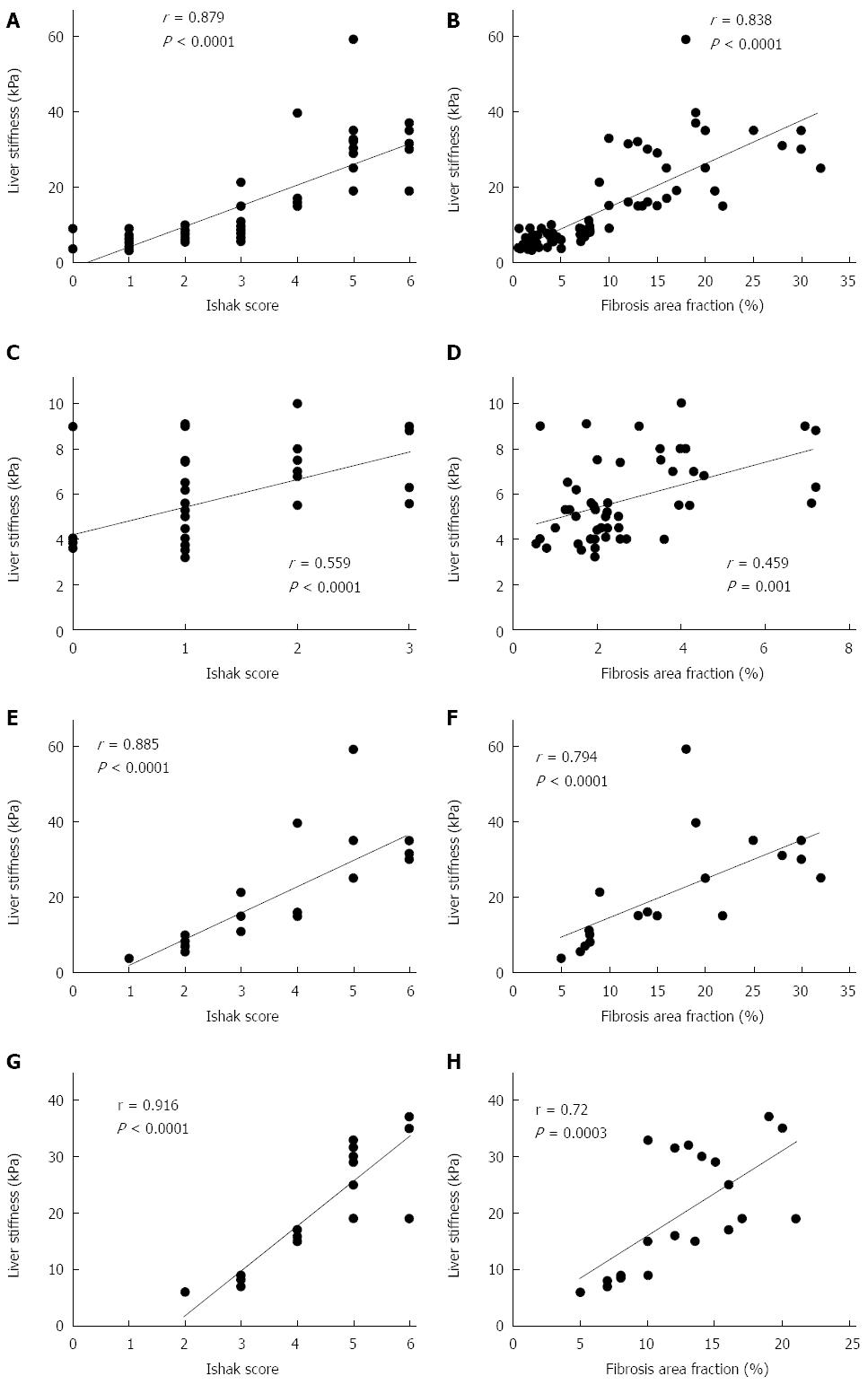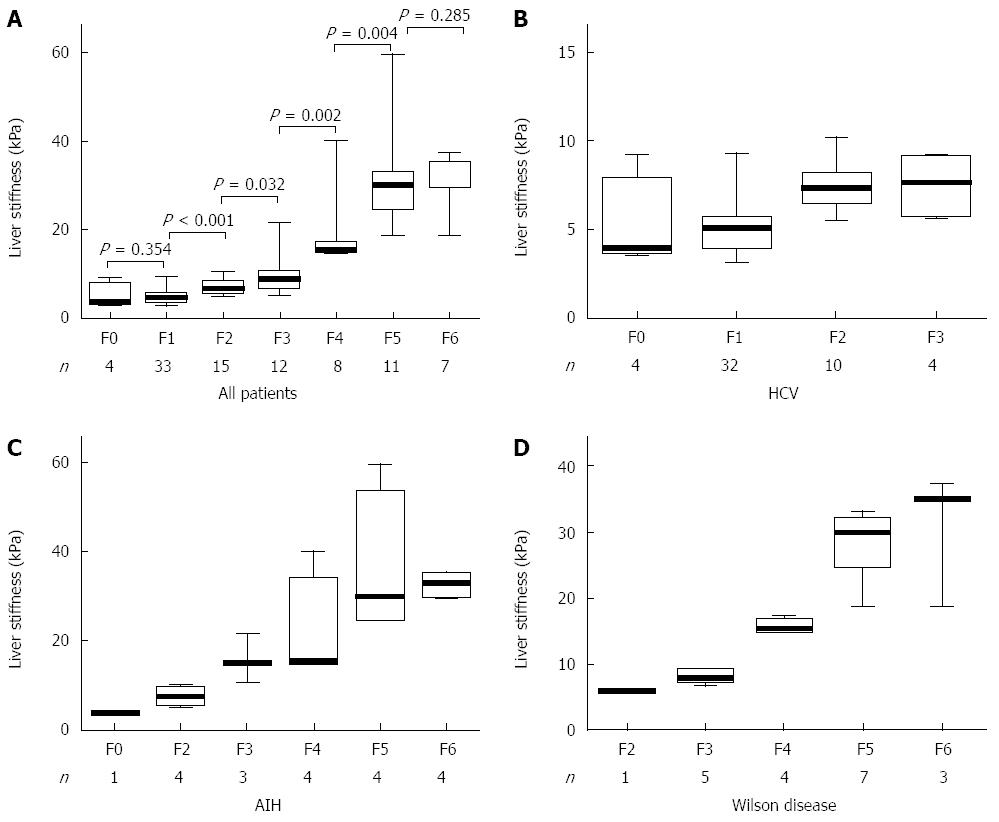Copyright
©The Author(s) 2016.
World J Gastroenterol. Apr 28, 2016; 22(16): 4238-4249
Published online Apr 28, 2016. doi: 10.3748/wjg.v22.i16.4238
Published online Apr 28, 2016. doi: 10.3748/wjg.v22.i16.4238
Figure 1 Correlation of LSM with fibrosis category by Ishak scores (left panel) and fibrosis area fraction (right panel).
A and B: All patients; C and D: HCV patients; E and F: AIH patients; G and H: Wilson disease patients.
Figure 2 Distribution of liver stiffness measurement according to categorical fibrosis scores.
A: All patients; B: HCV group; C: AIH group; D: Wilson disease group. Box-and-whiskers plot for liver stiffness measurement. The top and bottom of each box are the 75th and 25th percentiles. The line through the box is the median and the error bars are the maximum and minimum. The horizontal bar represents the significance between the designated groups.
Figure 3 Distribution of fibrosis area fraction according to the categorical fibrosis scores.
Box-and-whiskers plot for liver stiffness measurement. The top and bottom of each box are the 75th and 25th percentiles. The line through the box is the median and the error bars are the maximum and minimum. The horizontal bar represents the significance between the designated groups.
Figure 4 Correlation of PELD/MELD scores of all studied patients with categorical Ishak fibrosis scores (A) and fibrosis area fraction (B).
PELD: Pediatric end-stage liver disease; MELD: Model for end-stage liver disease.
- Citation: Behairy BES, Sira MM, Zalata KR, Salama ESE, Abd-Allah MA. Transient elastography compared to liver biopsy and morphometry for predicting fibrosis in pediatric chronic liver disease: Does etiology matter? World J Gastroenterol 2016; 22(16): 4238-4249
- URL: https://www.wjgnet.com/1007-9327/full/v22/i16/4238.htm
- DOI: https://dx.doi.org/10.3748/wjg.v22.i16.4238
















